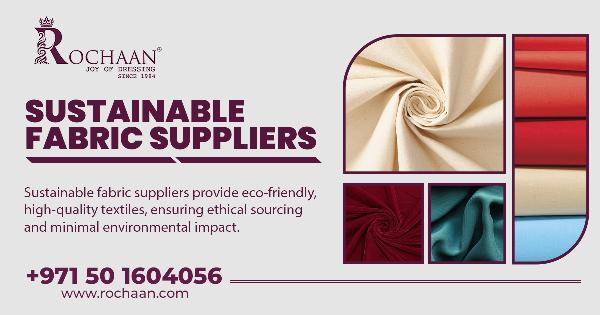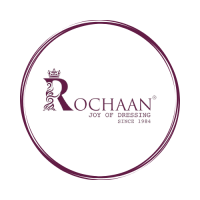Does SUSTAINABLE FABRICS Really Live up to the Hype?

Strong 8k brings an ultra-HD IPTV experience to your living room and your pocket.
The fashion industry has undergone a significant transformation in recent years, with increasing awareness about environmental and ethical issues. Sustainable fabrics have become a buzzword in this transformation, promising to offer eco-friendly and socially responsible alternatives to traditional textiles. But do sustainable fabrics truly live up to the hype? In this comprehensive article, we will explore what sustainable fabrics are, their benefits and drawbacks, and provide an in-depth analysis of whether they meet the expectations set by their advocates. We will also address frequently asked questions to provide a well-rounded understanding of this important topic.
Understanding Sustainable Fabrics
Definition and Types of Sustainable Fabrics
Sustainable fabrics are materials produced in ways that minimize their environmental impact and promote social responsibility. These fabrics can be categorized into several types based on their sources and production methods:
Natural Fibers: These include organic cotton, hemp, linen, and bamboo, which are grown without harmful pesticides and require less water.
Recycled Fabrics: Materials such as recycled polyester and nylon, which are made from post-consumer waste like plastic bottles and discarded textiles.
Biodegradable Fabrics: Fabrics that decompose naturally, such as Tencel (made from wood pulp) and organic wool.
Innovative Materials: New fabrics created through advanced technology, like Piñatex (made from pineapple leaves) and mushroom leather.
Production Processes
The production processes of sustainable fabrics are designed to reduce environmental impact:
Organic Farming: Uses natural fertilizers and pest control methods, reducing soil and water pollution.
Water Conservation: Employs techniques to minimize water usage, such as rain-fed irrigation and closed-loop water systems.
Energy Efficiency: Utilizes renewable energy sources and energy-efficient machinery in production.
Recycling and Upcycling: Converts waste materials into new fabrics, reducing landfill waste and the need for virgin resources.
Benefits of Sustainable Fabrics
Environmental Benefits
Reduced Carbon Footprint: Sustainable fabrics typically require less energy and emit fewer greenhouse gases during production.
Conservation of Resources: By using organic and recycled materials, sustainable fabrics help conserve water, energy, and raw materials.
Waste Reduction: Recycling and upcycling processes help reduce the amount of waste sent to landfills and oceans.
Social and Ethical Benefits
Fair Labor Practices: Many sustainable fabric producers ensure fair wages and safe working conditions for their workers.
Supporting Communities: Sustainable farming and production often benefit local communities by providing jobs and promoting economic development.
Health Benefits
Chemical-Free: Organic fabrics are free from harmful chemicals and pesticides, reducing the risk of skin irritation and allergies.
Breathability and Comfort: Natural fibers like cotton and linen are breathable and comfortable to wear, promoting better skin health.
Challenges and Criticisms of Sustainable Fabrics
Higher Costs
Production Costs: Sustainable fabrics often cost more to produce due to ethical labor practices and environmentally friendly methods.
Consumer Prices: These higher production costs can translate to higher prices for consumers, making sustainable fashion less accessible to some.
Limited Availability and Variety
Market Penetration: Sustainable fabrics are not as widely available as conventional materials, limiting consumer choices.
Design Limitations: Some sustainable fabrics may have limitations in terms of texture, durability, and versatility compared to traditional fabrics.
Greenwashing
Misleading Claims: Some companies may exaggerate or falsify their sustainability claims, misleading consumers about the true environmental impact of their products.
Lack of Regulation: The fashion industry lacks standardized regulations for sustainability, making it difficult for consumers to verify claims.
Also Read: THE ELEGANCE OF THE CLASSIC BLACK ABAYA
Case Studies and Real-World Examples
Brands Leading the Way
Patagonia: Known for its commitment to environmental responsibility, Patagonia uses recycled materials and promotes fair labor practices.
Stella McCartney: This luxury brand is a pioneer in sustainable fashion, using organic cotton, recycled fabrics, and innovative materials like mushroom leather.
Everlane: Focuses on transparency and ethical production, using sustainable materials and providing detailed information about its factories and production processes.
Success Stories
Reformation: This brand has built its reputation on sustainability, using eco-friendly materials and practices to produce stylish, trendy clothing.
Eileen Fisher: Committed to sustainability, Eileen Fisher uses organic fibers, recycled materials, and promotes a circular fashion model.
How to Choose Sustainable Fabrics
Identifying Genuine Sustainable Fabrics
Certifications: Look for certifications like GOTS (Global Organic Textile Standard), OEKO-TEX, and Fair Trade to ensure the authenticity of sustainable fabrics.
Research: Investigate the brands and their sustainability practices, including their supply chain and production methods.
Making Informed Decisions
Material Composition: Understand the composition of fabrics and their environmental impact.
Brand Transparency: Choose brands that provide detailed information about their sustainability efforts and practices.
Balancing Cost and Sustainability
Investment Pieces: Consider investing in higher-quality sustainable pieces that will last longer and provide better value over time.
Budget-Friendly Options: Look for affordable sustainable brands or second-hand options to make eco-friendly fashion more accessible.
Frequently Asked Questions (FAQ)
What makes a fabric sustainable?
A fabric is considered sustainable if it is produced in a way that minimizes environmental impact and promotes ethical labor practices. This includes using organic or recycled materials, conserving resources, and ensuring fair wages and safe working conditions.
Are sustainable fabrics more expensive?
Sustainable fabrics can be more expensive due to higher production costs associated with ethical labor practices and environmentally friendly methods. However, the long-term benefits of durability and reduced environmental impact can outweigh the initial cost.
How can I verify if a fabric is truly sustainable?
Look for certifications such as GOTS, OEKO-TEX, and Fair Trade. Research the brand’s sustainability practices and supply chain transparency. Reliable brands often provide detailed information about their materials and production processes.
Do sustainable fabrics perform as well as conventional fabrics?
Sustainable fabrics can perform as well as, or even better than, conventional fabrics in terms of comfort, breathability, and durability. However, some may have limitations in terms of texture and versatility.
Are all natural fibers sustainable?
Not all natural fibers are sustainable. The sustainability of natural fibers depends on the farming and production methods used. Organic cotton, for example, is more sustainable than conventional cotton due to reduced pesticide and water usage.
Can synthetic fabrics be sustainable?
Yes, synthetic fabrics like recycled polyester and nylon can be sustainable if they are made from post-consumer waste and produced using environmentally friendly methods. These fabrics help reduce waste and conserve resources.
How do sustainable fabrics impact the environment compared to traditional fabrics?
Sustainable fabrics generally have a lower environmental impact compared to traditional fabrics. They require fewer resources, emit fewer greenhouse gases, and often involve ethical labor practices. However, the impact can vary depending on the specific material and production methods used.
What are some examples of innovative sustainable fabrics?
Innovative sustainable fabrics include Piñatex (made from pineapple leaves), mushroom leather, Tencel (made from wood pulp), and fabrics made from algae or orange fibers. These materials offer unique properties and reduce reliance on conventional textiles.
How can I incorporate sustainable fabrics into my wardrobe?
Start by choosing clothing made from organic or recycled materials. Look for brands that prioritize sustainability and transparency. Consider investing in higher-quality pieces that will last longer and reduce the need for frequent replacements.
Are there any downsides to using sustainable fabrics?
The main downsides of sustainable fabrics are higher costs and limited availability. Additionally, some sustainable fabrics may have design limitations or require special care. However, the environmental and ethical benefits often outweigh these drawbacks.
Conclusion
Sustainable fabrics offer a promising solution to the environmental and ethical challenges facing the fashion industry. While they may have higher costs and limited availability, their benefits in terms of reduced environmental impact, ethical production practices, and health advantages make them a valuable addition to any wardrobe. By making informed choices and supporting brands committed to sustainability, consumers can help drive positive change in the fashion industry and promote a more sustainable future.
Note: IndiBlogHub features both user-submitted and editorial content. We do not verify third-party contributions. Read our Disclaimer and Privacy Policyfor details.


